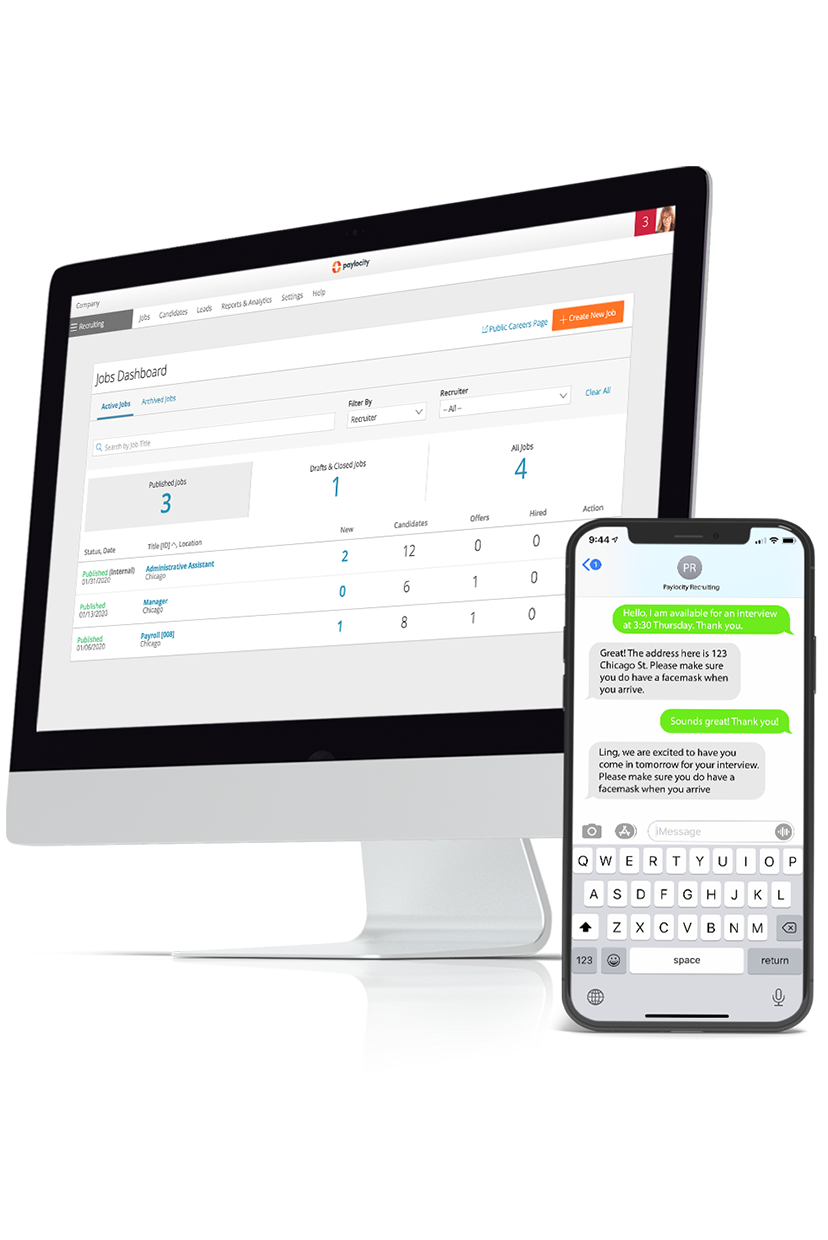Time to Fill
Summary Definition: An HR and recruiting metric that indicates the average time it takes a company to fill an open position, from the time it was posted until a candidate accepts an offer.
What is Time to Fill?
Time to fill is an HR and recruiting metric that refers to the length of the hiring process. It starts from the day a job opening is created and concludes when a candidate accepts an offer.
By tracking the average time it takes to fill a job, organizations can identify areas for improvement that reduce recruitment costs and speed up response time to qualified candidates.
Key Takeaways
- Time to fill measures the period between the opening and closing of a vacant position.
- It differs from “time to hire,” which measures the duration between candidate application and job acceptance (excluding the time between the job's posting and the candidate's application).
- Companies can reduce time to fill with employee referral programs and by investing in modern HR software automation.
Time to Fill vs. Time to Hire
Time to fill and time to hire are distinct HR metrics, but they’re often used interchangeably.
- Time to fill measures the entire hiring process, from posting a job vacancy to a candidate accepting an offer. It monitors the efficiency of your recruitment and hiring approach as a whole. Knowing this metric also helps your team with workforce management planning.
- Time to hire refers to just the period between when a candidate applies for a job and when they accept an offer for it. It specifically highlights your team’s efficiency in moving candidates through the hiring pipeline.
With this distinction in mind, time to hire should always be equal to or less than the time to fill.
Why Tracking Time to Fill is Important
Tracking time to fill is beneficial for a few reasons:
-
Better recruitment and workforce planning. It prepares your team to manage employee turnover more efficiently. Data can be broken down by role to prepare each team for how best to handle job replacements.
For example, you may find that hiring a manager takes an average of 60 days, but replacing a sales lead only takes 25. This lets you know how long those roles will probably stay empty and the period for which you’ll need to arrange temporary cover.
-
Eliminates process inefficiencies. You can compare your time-to-fill data against industry averages and internal standards to determine if your hiring process needs to be examined.
For example, analyzing your time to fill may reveal that your lengthy hiring process isn’t due to a lack of experienced and qualified candidates, but a bottleneck in the approval process. Knowing the metric across multiple levels of your company can help flag such issues.
-
It saves money. The average cost to replace an employee is just under $4,700. This number can skyrocket, however, due to slow recruitment processes. Knowing your time to fill can help you make improvements that streamline the process.
How to Calculate Time to Fill
To calculate time to fill for a single position, take the date the job opening was created internally or posted on the internet, and count the days between this point to when a candidate accepts an offer.
For example, if a candidate applied on June 10 and accepted a position on June 27, the position’s time to fill would be 17 days.
Time-to-Fill Calculation for Single Position
Job Acceptance Date – Job Posting Date
Example: June 27 – June 10 = 17 days
To find the average time to fill across your organization, combine all the individual time-to-fill calculations, and divide by the number of job openings in a given period.
For example, say three jobs were filled in a given period. Their respective time to fill metrics were five days, 16 days, and 20 days. Therefore, the company's average time to fill during that time was 13.7 days.
Average Time-to-Fill Calculation
(Time to fill #1 + Time to fill #2 + Time to fill #3, etc.) / # of job openings in a given period
Example: (5 + 16 + 20) / 3 = 13.7 days
How to Reduce Time to Fill
Here are some ways you can reduce time to fill and streamline the recruiting process:
- Eliminate hiring bottlenecks: Regularly audit your hiring processes to look for logjams in the pipeline. You may find that certain tasks, such as interview scheduling or resume screening, take too much time.
- Launch an employee referral program: You can bolster the efforts of your team with employee referrals. A simple employee incentive program can fast-track hard-to-replace positions and save you money.
- Automate interview scheduling: Use HR software to automate the scheduling of candidate interviews. This allows candidates to self-manage interviews and find times that align with their schedules.
- Use talent management software: Use the right tools to manage recruitment, employee onboarding, and performance. Built-in automation streamlines the employee journey.

Keep Your Workforce Ready
Finding the right talent for your team can be challenging in today’s market. But with the right tools, it doesn’t have to be a strain on your internal resources as well. Our recruiting platform streamlines the process, bringing you an intuitive way to search for and engage with top candidates. With communication methods like texting and video, and data that helps you track progress, attracting and winning has never been easier.